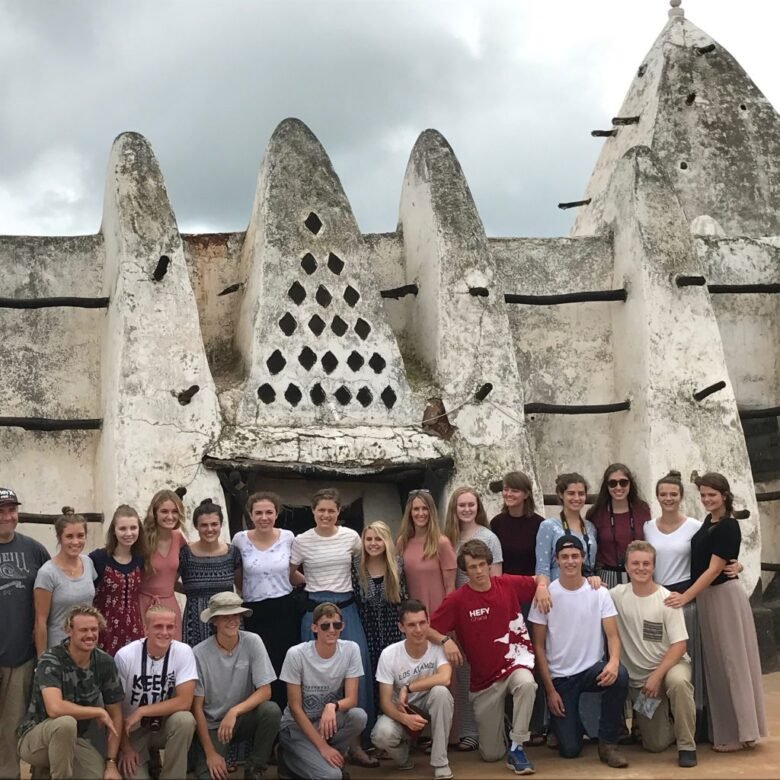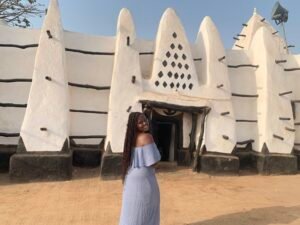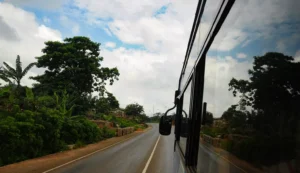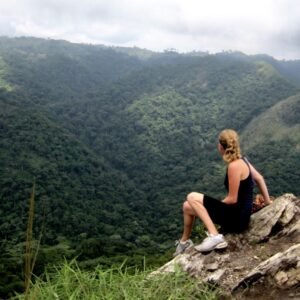Northern Ghana is a land of striking contrasts—vast savannahs, ancient mud mosques, rich cultural heritage, and untamed wildlife. Unlike the bustling southern regions, the north offers a more rugged, traditional, and authentic side of Ghana. This guide provides everything you need to plan a meaningful journey through Northern Ghana, from cultural highlights and nature parks to local experiences and travel logistics.
Why Visit Northern Ghana?
- Cultural Depth: Home to some of Ghana’s oldest communities, including the Dagomba, Gonja, Mamprusi, and others.
- Wildlife & Nature: Ghana’s best safari experiences are found here.
- Spiritual Heritage: Ancient mosques and ancestral traditions offer a glimpse into centuries-old belief systems.
- Off-the-Beaten-Path: Fewer tourists mean more genuine encounters and unspoiled experiences.
Key Destinations in Northern Ghana
1. Tamale – The Northern Hub
Tamale is the capital of the Northern Region and serves as the gateway to the north. It’s a fast-growing city with a blend of modern amenities and traditional influences.
Highlights:
- Tamale Central Market: Bustling with craft goods, leatherworks, and spices
- Cultural Centre: Offers art exhibitions, local fabrics, and traditional performances
- Leather Tannery: A fascinating, if pungent, look at local leather production
- Mosques: Stunning Sudanese-style architecture in the city and surrounding areas
Tip: Use Tamale as your base for trips to Mole National Park, Larabanga, and other surrounding areas.
2. Mole National Park – Ghana’s Safari Capital
Location: About 3 hours west of Tamale
Size: 4,840 km²
Mole is Ghana’s largest national park and the premier destination for spotting wildlife.
What You’ll See:
- Elephants
- Antelope, bushbuck, warthogs
- Monkeys and baboons
- Birds (over 300 species)
Activities:
- Walking and driving safaris
- Birdwatching tours
- Village cultural tours (Mognori Eco-Village)
Where to Stay:
- Zaina Lodge (luxury safari experience)
- Mole Motel (budget to mid-range)
- Local guesthouses in Larabanga
3. Larabanga – Ghana’s Oldest Mosque
Larabanga is home to the famous Larabanga Mosque, built in the 15th century in traditional Sudano-Sahelian mud architecture.
Why Visit:
- One of West Africa’s oldest and most iconic mosques
- Deep spiritual and cultural significance
- Nearby sacred stone and mystical legends tied to the village
Visitor Note: Non-Muslims are not allowed inside the mosque, but a guided tour around it is still insightful.
4. Paga – Sacred Crocodiles and Border Culture
Located in the Upper East Region, near Ghana’s border with Burkina Faso, Paga is known for its friendly sacred crocodiles.
Attractions:
- Paga Crocodile Pond: Home to crocodiles believed to embody ancestral spirits
- Chief’s Palace: Learn about local governance and community structure
- Cross-border culture: Interactions with Burkina Faso’s Kassena people
Experience Tip: You can touch and photograph the crocodiles—but only under a guide’s supervision, and after they’re fed.
5. Tongo Hills and Tenzug Shrine
Location: Upper East Region, near Bolgatanga
The Tongo Hills are home to sacred sites and traditional shrines set in dramatic rocky terrain.
What to See:
- Tenzug Shrine: Accessible only if you remove your shirt (men and women) as a sign of respect
- Witchcraft caves: Believed to house spirits or protect those accused of witchcraft
- Traditional priest rituals and consultations
Best For: Spiritual explorers, anthropologists, and photographers.
6. Navrongo and Bolgatanga – Art, History, and Markets
Bolgatanga (Bolga):
- Famous for its vibrant markets, especially for Bolga baskets, woven from elephant grass
- Great for buying handicrafts, beads, and leather sandals
Navrongo:
- Visit the Navrongo Cathedral, one of Ghana’s oldest Catholic missions, built with mud-brick in 1906
Bonus Activity: Learn how to weave your own basket from a local artisan (available in some workshops).
Cultural Experiences in Northern Ghana
Festivals Worth Attending:
- Fire Festival (Bugum Chugu) – Celebrated by the Dagomba people with torches and drumming
- Damba Festival – Features traditional dancing, horse processions, and storytelling
- Kundum and Yam Festivals (seasonal across the region)
Etiquette Tips:
- Ask permission before taking photos of people or shrines
- Dress modestly in villages and religious sites
- Greet elders respectfully—greetings are important in Northern Ghana
Nature and Outdoor Adventures
Mount Afao and Gambaga Escarpment
- Excellent for trekking and panoramic views over the savannah
- Visit rocky plateaus, cliff villages, and birding spots
White Volta River Activities
- Canoeing (with local guides)
- Fishing and riverbank picnics
Savanah Landscapes and Sunsets
- Drive or bike around villages at sunset for breathtaking scenes and wildlife spotting
Food and Local Cuisine
Northern Ghana has a distinct culinary identity. Staple foods include:
- TZ (Tuo Zaafi): A soft maize-based dish served with soup (ayoyo, dawadawa)
- Pito: A traditional millet beer brewed in homes—ask to try some in local communities
- Guinea fowl and goat meat: Popular grilled delicacies
- Shea butter: Often used in cooking and skin care
Cultural Insight: Meals are traditionally eaten from a shared bowl, especially during community events.
Getting There and Around
By Air:
- Daily flights from Accra to Tamale Airport
- Flights take about 1 hour, operated by PassionAir or Africa World Airlines
By Road:
- Long-distance buses (STC, VIP) travel from Accra, Kumasi, and Takoradi to Tamale and Bolga
- Roads are paved to major towns but may be rough in remote areas
Local Transport:
- Shared taxis and motor tricycles (motor kings) are common
- Private 4WD hire recommended for Mole, Paga, and off-road travel
Where to Stay
| Location | Recommended Lodges | Budget Range (USD) |
|---|---|---|
| Tamale | Mariam Hotel, Gariba Lodge | $25–$70 |
| Mole Park | Zaina Lodge, Mole Motel | $20–$300 |
| Bolgatanga | Blue Sky Hotel, Tap Hotel | $15–$60 |
| Paga/Navrongo | Guesthouses and community lodges | $10–$40 |
Safety and Travel Tips
- Malaria precautions are essential—carry repellent and take prophylaxis.
- Travel in groups or with guides when visiting rural or remote areas.
- Carry cash—many areas lack ATMs or mobile payment systems.
- Respect local customs, especially during shrine visits or traditional ceremonies.
- Ask about photography permissions, especially near religious or spiritual sites.
Conclusion
Northern Ghana offers a travel experience unlike any other part of the country. It’s where culture, spirituality, adventure, and community converge. From walking alongside elephants in Mole to learning ancestral customs in Tongo and weaving baskets in Bolga, the region offers deep, personal engagement with Ghana’s roots.
For the thoughtful traveler seeking connection, authenticity, and awe, Northern Ghana is not just a destination—it’s a revelation.




